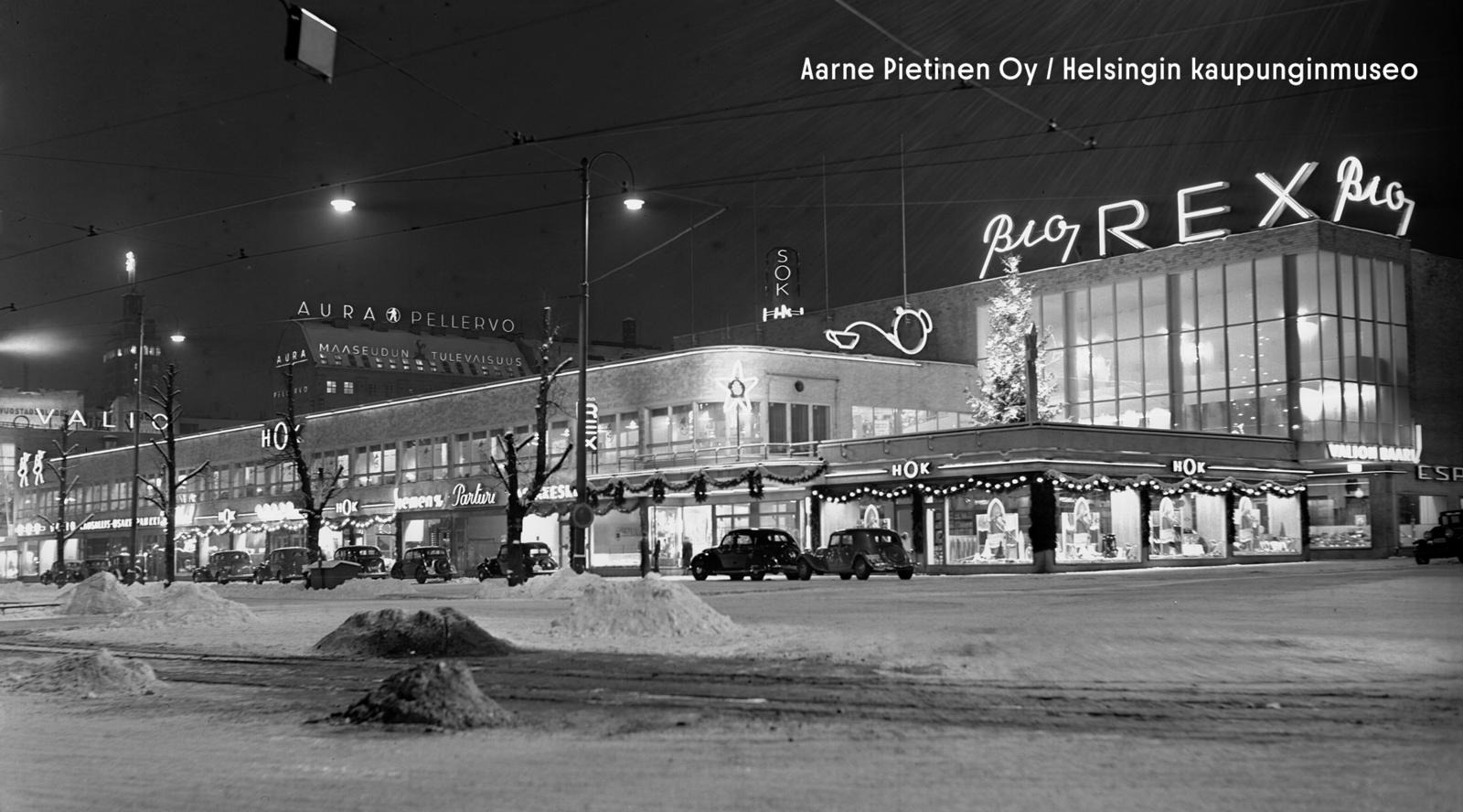
From Military Barracks to a Functionalist Palace
Before Lasipalatsi, the site was home to the Turku Barracks, which were severely damaged during the Finnish Civil War in 1918. The ruined buildings were left to deteriorate for decades until, in the Olympic spirit of the 1930s, the decision was made to build something new.
Although the Olympics were postponed due to the war and eventually held in 1952, the site had already begun a new chapter. The city leased the area to SOK and Valio, who founded Oy Lasipalatsi Ab.
Young Architects and a Symbol of Modern Helsinki
Lasipalatsi was a joint project by three architecture students – Viljo Revell, Niilo Kokko, and Heimo Riihimäki. They aimed to create a functionalist building that emphasized glass surfaces, light, and modern aesthetics.
The building rose at record speed – in just six months – “with Finnish grit and American speed.” The first shops opened for the Christmas market in 1935, and the official inauguration took place in early 1936.
Its bright functionalist architecture quickly made Lasipalatsi a new wonder of Helsinki. One newspaper of the time wrote: “Lasipalatsi must be seen at night, when the illuminated glass truly comes into its own and makes this building a real palace.”
HOK’s Grand Restaurant and 1930s Glamour
The upper floor housed HOK’s grand restaurant, which could accommodate up to 700 guests. The hall stretched from the Palm Room to the Bio Rex terrace and was one of the city’s most impressive spaces.
After the depression, Helsinkians were eager to celebrate again – and Lasipalatsi’s restaurant became a popular meeting place for locals and actors alike. Here, one might spot stars like Ansa Ikonen, Tauno Palo, and many others of the era.
The Palm Room’s poison green color and metallic pillars reflected not only modern style but also practicality – easy-to-clean, hygienic surfaces considered progressive at the time. The kitchen was state-of-the-art: electrified and equipped with new cooling systems not found elsewhere in Finland.
Decline and New Phases
In 1949, Lasipalatsi’s golden age began to fade when HOK moved its operations to the newly built Sokos department store across the street. The grand restaurant’s space was divided into offices, and the building was gradually fragmented into smaller units until the 1990s.
Restoration and a New Life
In 1995, Lasipalatsi finally received the renovation it deserved. The architectural firm Alli was tasked with restoring the building’s original glory, preserving its 1936 appearance while adapting it for use in the 21st century.
The restoration was completed in 1998, and in 1999 Lasipalatsi became part of the Ravintolakolmio Group.
Return to Roots
In July 2024, a new era began: Ravintola Lasipalatsi, Café Lasipalatsi, and the private restaurant Bio Rex returned to the HOK-Elanto restaurant family – back to where it all began nearly ninety years earlier.
Today, Lasipalatsi lives on as part of the heart of Helsinki – a place where the boldness of the functionalist era, the city’s stories, and vibrant contemporary culture meet every day.
In these restaurants
- Mannerheimintie 22-24, 00100, Helsinki























